I am so stressed over all this I think Dad will outlive me!
I think about death a lot—especially as I am immersed in stories of Michael Jackson’s life and death.
Sunday, June 28, 2009
Monday, June 22, 2009
Nursing Home Costs--Average in U.S.=$77,000
State-By-State Long Term Health Care Costs by the AARP
To find the average cost in your state for a nursing home, assisted living facility, adult day center, or home health aide, locate your state in the tables below. The answers may surprise you.
This information was taken from two surveys done by the MetLife Mature Market Institute. These dollar figures represent an average cost based on a sample of long-term care services/facilities in your state for 2007. Your actual costs will vary. Use these costs as a guide in your long-term care planning.
http://www.aarp.org/family/caregiving/articles/state-by-state_long-term.html
To find the average cost in your state for a nursing home, assisted living facility, adult day center, or home health aide, locate your state in the tables below. The answers may surprise you.
This information was taken from two surveys done by the MetLife Mature Market Institute. These dollar figures represent an average cost based on a sample of long-term care services/facilities in your state for 2007. Your actual costs will vary. Use these costs as a guide in your long-term care planning.
http://www.aarp.org/family/caregiving/articles/state-by-state_long-term.html
Emmet Fox Says We Will See Our Loved Ones Again
Will you meet your relatives and friends when you go over? Where there is a strong emotional link either of love or hatred there is likely to be a meeting. Where there is a strong link of genuine love there is sure to be a meeting. Where there is no particular feeling between two people there will not be a meeting. There is a real danger that if you allow yourself to indulge in hatred of anyone, you will meet when you both have passed over. To prevent this from happening, destroy the link by ceasing to hate.
The so-called dead are very sensitive to our thoughts, and for this reason excessive grief is deprecated. It saddens them and prevents their focusing their attention as they should upon the new life that they are starting. Of course, it seems very hard to tell people not to grieve when one whom they have dearly loved has passed out of sight, but remember that is there is a link of love you will certainly meet again, and that nothing that is good, or beautiful, or true, can ever be lost.
We can pray for those who have passed on, and indeed it is a sacred duty to do so. The practice was generally discontinued after the Reformation because it had been greatly abused and commercialized, but, nevertheless, it is an excellent practice in itself. Realize peace of mind, freedom, and understanding for them
In my Father’s house are many mansions. If it were not so, I would have told you. I go to prepare a place for you (John 14:2).
The so-called dead are very sensitive to our thoughts, and for this reason excessive grief is deprecated. It saddens them and prevents their focusing their attention as they should upon the new life that they are starting. Of course, it seems very hard to tell people not to grieve when one whom they have dearly loved has passed out of sight, but remember that is there is a link of love you will certainly meet again, and that nothing that is good, or beautiful, or true, can ever be lost.
We can pray for those who have passed on, and indeed it is a sacred duty to do so. The practice was generally discontinued after the Reformation because it had been greatly abused and commercialized, but, nevertheless, it is an excellent practice in itself. Realize peace of mind, freedom, and understanding for them
In my Father’s house are many mansions. If it were not so, I would have told you. I go to prepare a place for you (John 14:2).
Funeral Arrangements and Memorial Services
The AARP provides the latest on funeral costs:
Funerals and Burials are Among the Most Expensive Purchases
• In 2001 (latest year figures are available), the average cost of a traditional adult funeral was $5,160 (without any extras).
• Burial costs are an additional $2,000 or more.
• In-ground burial can add another $2,400 to total expenses.
• Flowers, obituary notices, acknowledgment cards, burial liners or vaults, and special transportation can add an additional $1,000.
• Funeral and burial costs combined can easily reach as much as $10,000.
This is consistent with my Mom’s total funeral costs which were close to $10,000 This was after throwing in the family limo for free.
The Funeral Rule
The Funeral Rule requires funeral homes to provide price lists of available options (general services, caskets, outer burial containers). Homes must disclose prices by telephone and offer lists for review at each facility. You should call or visit at least three funeral homes and cemeteries to compare prices. With three lists, you can more accurately assess the total costs and be able to compare.
What is on the Price List?
All available services and their cost, including:
• Funeral director services for initial conference, consultations, paperwork, and overhead. This fee is added to all bills.
• Transportation of the body to the funeral home and to the place of final disposition.
• Care of the body, including embalming and " casketing, " or dressing the body.
• Use of facilities for a viewing, wake, or visitation, and the funeral or memorial ceremony at the funeral home.
• Other options: purchasing flowers, preparing obituary notices, or providing music.
• Alternative arrangements: cremation or immediate burial where the body is interred without embalming, usually in a simple container and no viewing or ceremony with the body present.
Caskets and Outer Burial ContainersA casket is the single most expensive item in a traditional funeral. Traditionally, caskets were sold only by funeral homes, but now cemeteries and third parties sell caskets, even on the Internet. Available in many styles and prices, caskets may be made from metal, wood, fiberglass, or plastic.
Under the federal Funeral Rule, a funeral home cannot charge extra if you provide your own casket from an outside source. No casket is required for a direct cremation, immediate burial, or when donating one's body to science.
Most cemeteries require the use of a grave liner or vault. These outer burial containers surround the casket in the grave to prevent the ground from sinking as settling occurs over time. In some locations, both funeral homes and cemeteries sell vaults and liners. In some areas, it is possible, and less expensive, to purchase an outer burial container from a third party.
Veteran Funerals
If the deceased was a veteran, the U.S. Department of Veterans Affairs provides small burial allowances. All veterans can receive a burial flag and burial in national cemeteries. Burial at no charge may be possible in an area where a national Veterans Cemetery is located. Call 800-555-1212 for the toll-free number of your regional Veterans Affairs office or visit their Web site.
Funerals and Burials are Among the Most Expensive Purchases
• In 2001 (latest year figures are available), the average cost of a traditional adult funeral was $5,160 (without any extras).
• Burial costs are an additional $2,000 or more.
• In-ground burial can add another $2,400 to total expenses.
• Flowers, obituary notices, acknowledgment cards, burial liners or vaults, and special transportation can add an additional $1,000.
• Funeral and burial costs combined can easily reach as much as $10,000.
This is consistent with my Mom’s total funeral costs which were close to $10,000 This was after throwing in the family limo for free.
The Funeral Rule
The Funeral Rule requires funeral homes to provide price lists of available options (general services, caskets, outer burial containers). Homes must disclose prices by telephone and offer lists for review at each facility. You should call or visit at least three funeral homes and cemeteries to compare prices. With three lists, you can more accurately assess the total costs and be able to compare.
What is on the Price List?
All available services and their cost, including:
• Funeral director services for initial conference, consultations, paperwork, and overhead. This fee is added to all bills.
• Transportation of the body to the funeral home and to the place of final disposition.
• Care of the body, including embalming and " casketing, " or dressing the body.
• Use of facilities for a viewing, wake, or visitation, and the funeral or memorial ceremony at the funeral home.
• Other options: purchasing flowers, preparing obituary notices, or providing music.
• Alternative arrangements: cremation or immediate burial where the body is interred without embalming, usually in a simple container and no viewing or ceremony with the body present.
Caskets and Outer Burial ContainersA casket is the single most expensive item in a traditional funeral. Traditionally, caskets were sold only by funeral homes, but now cemeteries and third parties sell caskets, even on the Internet. Available in many styles and prices, caskets may be made from metal, wood, fiberglass, or plastic.
Under the federal Funeral Rule, a funeral home cannot charge extra if you provide your own casket from an outside source. No casket is required for a direct cremation, immediate burial, or when donating one's body to science.
Most cemeteries require the use of a grave liner or vault. These outer burial containers surround the casket in the grave to prevent the ground from sinking as settling occurs over time. In some locations, both funeral homes and cemeteries sell vaults and liners. In some areas, it is possible, and less expensive, to purchase an outer burial container from a third party.
Veteran Funerals
If the deceased was a veteran, the U.S. Department of Veterans Affairs provides small burial allowances. All veterans can receive a burial flag and burial in national cemeteries. Burial at no charge may be possible in an area where a national Veterans Cemetery is located. Call 800-555-1212 for the toll-free number of your regional Veterans Affairs office or visit their Web site.
Sunday, June 21, 2009
Thursday, June 18, 2009
Dad's Bedroom is Ready To Accommodate His New Condition
Barbara and I rearranged Dad's entire room to accommodate him with his new condition. We changed the layout and removed lots of clutter.
We even moved the other mattress, box spring, frame, headboard down to basement---BY OURSELVES.
Now, there is ample room to move around and assist him from both sides of his new hospital bed.
We even moved the other mattress, box spring, frame, headboard down to basement---BY OURSELVES.
Now, there is ample room to move around and assist him from both sides of his new hospital bed.
Dad is a Different Patient Now
A New Routine With New Caregiver Instructions
We finally brought Dad home from the hospice unit after two stays of 3-nights and 5-nights.
After remaining relatively comatose in the hospital, eating soft foods in a semi-sleep state, he came home with a whole new burst of energy.
He recognized me and the caregivers, was animated, he fought with the EMTs, and even asked for his favorite fried chicken that he ate by himself. I was thrilled to have parts of him back. He was feisty and alert.
The nurse came by to give new instructions now that his condition has dramatically changed.
He will remain in the hospital bed with bars up.
His toilet will now be his diapers
He must be turned every two hours
There is morphine to ease pain (ONLY AS NEEDED). The caregivers are not fond of drugs and neither am I.
Prior to his arrival, Barbara and I converted his room to more of a hospital room. We moved the other bed (box spring, frame and all to the basement). We removed a lot of items he will no longer need. We cleared the pathway for caregivers to better handle him from BOTH sides of the hospital bed.
It is all a big change. He is heavy to maneuver for turning, changing diapers, cleaning him, and changing linens.
Time will tell if the ladies can handle him. I will monitor closely.
We finally brought Dad home from the hospice unit after two stays of 3-nights and 5-nights.
After remaining relatively comatose in the hospital, eating soft foods in a semi-sleep state, he came home with a whole new burst of energy.
He recognized me and the caregivers, was animated, he fought with the EMTs, and even asked for his favorite fried chicken that he ate by himself. I was thrilled to have parts of him back. He was feisty and alert.
The nurse came by to give new instructions now that his condition has dramatically changed.
He will remain in the hospital bed with bars up.
His toilet will now be his diapers
He must be turned every two hours
There is morphine to ease pain (ONLY AS NEEDED). The caregivers are not fond of drugs and neither am I.
Prior to his arrival, Barbara and I converted his room to more of a hospital room. We moved the other bed (box spring, frame and all to the basement). We removed a lot of items he will no longer need. We cleared the pathway for caregivers to better handle him from BOTH sides of the hospital bed.
It is all a big change. He is heavy to maneuver for turning, changing diapers, cleaning him, and changing linens.
Time will tell if the ladies can handle him. I will monitor closely.
I Extended My Stay Until Dad is Settled Into New Routine
My flight left without me yesterday. I bought a one-way return ticket on another airline. For now, I will leave tomorrow night.
Tuesday, June 16, 2009
Home wins!
I spent 8.5 hours with Dad in hospice unit yesterday. The doctor suggests Dad go into a nursing home. I did a values comparison grid about the two choices: keeping him at home scored a 91% vs a 35% for moving him to a nursing home.
I spoke with the caregivers to see if they can care for a comatose Dad. They are trained for this work.
I spoke for a long time with the chaplain.
They will probably send him home today with mostly NEW caregiving requirements.
I spoke with the caregivers to see if they can care for a comatose Dad. They are trained for this work.
I spoke for a long time with the chaplain.
They will probably send him home today with mostly NEW caregiving requirements.
Monday, June 15, 2009
Victory--Dad Finally Ate at 5:30
Spent 7 hours with Dad in the hospice unit today. He was completely unresponsive and did not eat breakfast or lunch.
Finally, at 5:30, a nurse showed me a trick to get him to eat. I fed him for 45 minutes while he slowly ate---in a semi-comatose state.
They say they will discharge him back home tomorrow.
I dont know if we are ready to care from him in his condition.
Finally, at 5:30, a nurse showed me a trick to get him to eat. I fed him for 45 minutes while he slowly ate---in a semi-comatose state.
They say they will discharge him back home tomorrow.
I dont know if we are ready to care from him in his condition.
Sunday, June 14, 2009
Dad's in Hospice Unit
I arrived in Chicago yesterday. My Dad was placed in the hospice unit at Mercy hospital twice this week.
I don’t know how to describe how I feel seeing my Dad in the hospital-- frail, disoriented, and unresponsive. He was happy to see me so he smiled. I brought his favorite, Sees candy, so he perked up but he was mostly fading in and out of consciousness, or he was irritable.
The hospice unit is warm. Although, I was alone with Dad, it was good to have some alone time with him.
When the priest came in to pray, that’s when I lost it.
My Dad is completely unrecognizable.
I fed him pureed food. He ate ever so slowly with his eyes closed the entire time.
The hospice nurse gave me a book that describes the stages of moving on. I was shocked to realize Dad is exhibiting them all. I am so unfamiliar with death and avoid dealing with it as much as possible.
I will continue later……………………
Time to go back to the hospital.
I don’t know how to describe how I feel seeing my Dad in the hospital-- frail, disoriented, and unresponsive. He was happy to see me so he smiled. I brought his favorite, Sees candy, so he perked up but he was mostly fading in and out of consciousness, or he was irritable.
The hospice unit is warm. Although, I was alone with Dad, it was good to have some alone time with him.
When the priest came in to pray, that’s when I lost it.
My Dad is completely unrecognizable.
I fed him pureed food. He ate ever so slowly with his eyes closed the entire time.
The hospice nurse gave me a book that describes the stages of moving on. I was shocked to realize Dad is exhibiting them all. I am so unfamiliar with death and avoid dealing with it as much as possible.
I will continue later……………………
Time to go back to the hospital.
Tuesday, June 9, 2009
Dad Rushed to Hospital Hospice Unit at 2AM
At 2AM, Dad was rushed to the hospice unit at Mercy Hospital. He screamed about excruciating chest pains. It took hospice more than two hours to get him there from the time they received the first crises call about a possible heart attack After getting 4 hours of sleep, I spoke to daytime caregiver, weekend caregiver, night time caregiver (from Dads bedside), hospice unit nurse, Maggie, and hospice unit Chaplain Robert. Such a world wind of emotions!
God grant me the serenity to accept the things I cannot change.
The courage to change the things I can.
And the wisdom to know the difference
God grant me the serenity to accept the things I cannot change.
The courage to change the things I can.
And the wisdom to know the difference
Monday, June 8, 2009
Groom's 93, Bride's 89

BY MICHAEL LaFORGIA Palm Beach Post File this under ``It's never too late.'' June 8, 2009
Sunday, before a crowd of friends and relatives, Ebenezer Rose, 93, wed Monica Hayden, 89, in a ceremony at the Crowne Plaza hotel on Belvedere Road.
The couple said they decided to take the plunge after a brief courtship.
Rose, who as a younger man traveled the world as a missionary for the Seventh-Day Adventist Church, met Hayden in church about 20 years ago.
''She had eyes on me all these years,'' said Rose, who lost Bernice, his wife of 58 years, about four years ago. ``By God's grace, we're here.''
He proposed to Hayden, whose two husbands are gone now, too, the second about six months ago.
'I told her, `Each of us is living a lonely life. Why not get married?' ''
When the day finally arrived, Rose dressed in a dapper tan suit and sat in a chair in front of the crowd of well-wishers, awaiting his bride.
She appeared at last to a flourish of music, decked out in white gloves, a beaded shawl and a glittering tiara. A wide grin spread across Rose's face, and stayed there.
After the kiss, and the champagne toast, and the meal and the cake, after the last guests had wished them health and happiness, Mr. and Mrs. Ebenezer Rose lingered a moment to consider their new life together.
''It was more than I expected,'' Mrs. Rose said, her tiara sparkling in the light.
``Beautiful.''
Nine Stages of Caregiving
Gail Sheehy wrote an article for AARP.org outlining the stages of caregiving. She calls it The Labyrinth of Caregiving. It reminds me of the 5 stages of grief because it is a process that ebbs and flows.
It has been FOUR years and FIVE months since I have been a solo, long-distance caregiver. I continue to evolve in my role emotionally and spiritually.
Here are Sheehy's stages:
1. Shock & Mobilization
Your entrance to the labyrinth of caregiving starts with shock and mobilization. You get a call that your mom's fallen, your dad's had an accident, your spouse has a frightening diagnosis. Who to call? Where to start? It's a rollercoaster—you may be up and down for weeks or even months.
2. The New Normal
You realize, perhaps for the first time, you have a new role—family caregiver. This isn't a sprint. It's going to be a marathon. You are living with a new uncertainty and you're not going back to the old normal.
3. Boomerang
Everything has settled down into a new normal routine. It's been months, maybe a year or more. You're handling it, thinking "OK, I can do this," when BOOMERANG! A new crisis erupts. You need to call a family meeting. Who else can help? You need to start thinking about how to take care of the caregiver—that's you!
4. Playing God
You've become very good at caregiving by now. You're the only one your loved one trusts. You believe you're the only one who truly understands what he or she needs. You're seen as heroic. You're playing God. But you know what? We ain't God. We can't control disease or aging. And if we keep trying we'll be overcome by stress and fatigue and come to a dead end.
5. I Can't Do This Anymore!
You were convinced you could do it differently. But a few years into it you break down in tears and total fatigue. You've given up so much. You absolutely must come up for air or you'll go down in despair. Call for help! Start taking at least one hour every day to do something that will give you pleasure and refreshment. Your loved one also needs some time with other people who offer stimulation of a different kind.
6. Circle of Care
You need to create a circle of people who will assume some responsibility for
aspects of care. Let members of your family and friends who have not been involved know that you have reached the end of your rope. They may assume you're handling it all. Even long distance, they can definitely be helpful. And don't be shy about asking for assistance from neighbors, coworkers, your community. A professional care manager can save your life.
7. Coming Back
At the seventh turning, you begin coming back. It is clear now that your loved one is not going to get well and will become more and more needy and dependent. You are approaching the center of the labyrinth. This is where you must begin the process of separation. It is a slow and painful process, but the other way is to lose your self and go down with the person you're caring for. That would be a double tragedy.
There is life after caregiving. What were your lifelines before caregiving? You must have some transports to joy? Pick them up again. They will lead you out of the labyrinth.
8. The Long Goodbye
This is the last turning. Inevitably, there will be times that you will likely feel: Why can't you die? Enough already. Then, of course, you'll feel guilty for thinking such a thing. But it is entirely human and predictable.
No one can answer your most burning question. How long? It's important at this turning to have end-of-life conversations. Encourage your loved one to talk about fears and wishes and goals. What kind of activities give him or her pleasure? And what kind of medical interventions does he want—or want stopped? Hard as it may be, follow your loved one's wishes. This is his or her death, not yours. You are on a different journey.
9. Afterlife of the Caregiver
And then, suddenly, it's over. Your loved one has passed on. You have completed the labyrinth of caregiving. Now what? Maybe you've forgotten who you were before. You've been consumed for so long by caring for someone you love. You have given of yourself and done a beautiful thing. After the first months of mourning, grief will come out of nowhere when you least expect it. Don't sit around and wait for depression to set in. Pick up your passion—whatever you do where time passes and you don't even notice—and follow it. It will lead you on a new path. Look at it as an adventure! And God bless you.
It has been FOUR years and FIVE months since I have been a solo, long-distance caregiver. I continue to evolve in my role emotionally and spiritually.
Here are Sheehy's stages:
1. Shock & Mobilization
Your entrance to the labyrinth of caregiving starts with shock and mobilization. You get a call that your mom's fallen, your dad's had an accident, your spouse has a frightening diagnosis. Who to call? Where to start? It's a rollercoaster—you may be up and down for weeks or even months.
2. The New Normal
You realize, perhaps for the first time, you have a new role—family caregiver. This isn't a sprint. It's going to be a marathon. You are living with a new uncertainty and you're not going back to the old normal.
3. Boomerang
Everything has settled down into a new normal routine. It's been months, maybe a year or more. You're handling it, thinking "OK, I can do this," when BOOMERANG! A new crisis erupts. You need to call a family meeting. Who else can help? You need to start thinking about how to take care of the caregiver—that's you!
4. Playing God
You've become very good at caregiving by now. You're the only one your loved one trusts. You believe you're the only one who truly understands what he or she needs. You're seen as heroic. You're playing God. But you know what? We ain't God. We can't control disease or aging. And if we keep trying we'll be overcome by stress and fatigue and come to a dead end.
5. I Can't Do This Anymore!
You were convinced you could do it differently. But a few years into it you break down in tears and total fatigue. You've given up so much. You absolutely must come up for air or you'll go down in despair. Call for help! Start taking at least one hour every day to do something that will give you pleasure and refreshment. Your loved one also needs some time with other people who offer stimulation of a different kind.
6. Circle of Care
You need to create a circle of people who will assume some responsibility for
aspects of care. Let members of your family and friends who have not been involved know that you have reached the end of your rope. They may assume you're handling it all. Even long distance, they can definitely be helpful. And don't be shy about asking for assistance from neighbors, coworkers, your community. A professional care manager can save your life.
7. Coming Back
At the seventh turning, you begin coming back. It is clear now that your loved one is not going to get well and will become more and more needy and dependent. You are approaching the center of the labyrinth. This is where you must begin the process of separation. It is a slow and painful process, but the other way is to lose your self and go down with the person you're caring for. That would be a double tragedy.
There is life after caregiving. What were your lifelines before caregiving? You must have some transports to joy? Pick them up again. They will lead you out of the labyrinth.
8. The Long Goodbye
This is the last turning. Inevitably, there will be times that you will likely feel: Why can't you die? Enough already. Then, of course, you'll feel guilty for thinking such a thing. But it is entirely human and predictable.
No one can answer your most burning question. How long? It's important at this turning to have end-of-life conversations. Encourage your loved one to talk about fears and wishes and goals. What kind of activities give him or her pleasure? And what kind of medical interventions does he want—or want stopped? Hard as it may be, follow your loved one's wishes. This is his or her death, not yours. You are on a different journey.
9. Afterlife of the Caregiver
And then, suddenly, it's over. Your loved one has passed on. You have completed the labyrinth of caregiving. Now what? Maybe you've forgotten who you were before. You've been consumed for so long by caring for someone you love. You have given of yourself and done a beautiful thing. After the first months of mourning, grief will come out of nowhere when you least expect it. Don't sit around and wait for depression to set in. Pick up your passion—whatever you do where time passes and you don't even notice—and follow it. It will lead you on a new path. Look at it as an adventure! And God bless you.
Dad is in hospice for TWO years
Dad is determined to beat the odds. There is no way to think about this without feeling uncomfortable. Hospice is a comfort-care service provide for a person (and their family) once a doctor has diagnosed them as terminally ill (6 months).
Dad continues with both good and bad days. He has good care and I know that helps his spirit desire to thrive.
Most of the time, I am satisfied with the service provided.
Here is an excerpt from my post from May 29 2007:
According to VITAS, the nation's largest hospice provider, End-of-life patient care pushes and tests us every day. Each day is a new life for hospice patients, continually creating new demands on caregivers. Each day, hospice must re-define itself to address the dynamic needs of patients and families.
Caring Connections, a program of the National Hospice and Palliative Care Organization (NHPCO), is a national consumer engagement initiative to improve care at the end of life, supported by a grant from The Robert Wood Johnson Foundation. They provide the following descriptions of hospice services from their website: caringinfo.org
How Does Hospice Work?
Hospice care is for any person who has a life-threatening or terminal illness. Most reimbursement sources require a prognosis of six months or less if the illness runs its normal course. Patients with both cancer and non-cancer illnesses are eligible to receive hospice care. All hospices consider the patient and family together as the unit of care.
The majority of hospice patients are cared for in their own homes or the homes of a loved one. “Home” may also be broadly construed to include services provided in nursing homes, hospitals and prisons.
Typically, a family member serves as the primary caregiver and, when appropriate, helps make decisions for the terminally ill individual. Members of the hospice staff make regular visits to assess the patient and provide additional care or other services. Hospice staff is on-call 24 hours a day, seven days a week.
Who is the Hospice Team?
Hospice care is a family-centered approach that includes, at a minimum, a team of doctors, nurses, social workers, counselors, and trained volunteers. They work together focusing on the dying patient’s needs; physical, psychological, or spiritual. The goal is to help keep the patient as pain-free as possible, with loved ones nearby until death. The hospice team develops a care plan that meets each patient's individual needs for pain management and symptom control.
It is important to find out what the role of the patient's primary doctor will be once the patient begins receiving hospice care. Most often, hospice patients can choose to have their personal doctor involved in the medical care. Both the patient's physician and the hospice medical director may work together to coordinate the patient's medical care, especially when symptoms are difficult to manage. Regardless, a physician's involvement is important to ensure quality hospice care. The hospice medical director is also available to answer questions you or the patient may have regarding hospice medical care.
The team usually consists of:
The patient' s personal physician;
Hospice physician (or medical director);
Nurses;
Home health aides;
Social workers;
Clergy or other counselors;
Trained volunteers; and
Speech, physical, and occupational therapists, if needed.
What Services Does the Hospice Team Provide?
--Among its major responsibilities, the interdisciplinary hospice team:
--Manages the patient’s pain and symptoms;
--Assists the patient with the emotional and psychosocial and spiritual aspects of dying;
--Provides needed medications, medical supplies, and equipment;
--Coaches the family on how to care for the patient;
--Delivers special services like speech and physical therapy when needed;
--Makes short-term inpatient care available when pain or symptoms become too difficult to manage at home, or the caregiver needs respite time; and
--Provides bereavement care and counseling to surviving family and friends.
In many cases, family members or loved ones are the patient's primary care givers. Additionally, hospice recognizes that loved ones have their own special needs for support. As a relationship with the hospice begins, hospice staff will want to know about the primary caregiver's priorities. They will also want to know how best to support the patient and family during this time. Support can take many different forms, including visits with the patient and family members; telephone calls to loved ones, including family members who live at a distance, about the patient’s condition; and the provision of volunteers to assist with patient and family needs.
Counseling services for the patient and loved ones are an important part of hospice care. After the patient's death, bereavement support is offered to families for at least one year. These services can take a variety of forms, including telephone calls, visits, written materials about grieving, and support groups. Individual counseling may be offered by the hospice or the hospice may make a referral to a community resource.
I decided to go online to locate VITAS closest to my parents and picked up that heavy telephone to determine how the Scott family can receive their services.
I spoke with Cindy a helpful call center specialist. I provided her with my mother’s and father’s Social Security numbers, insurance information and medical diagnoses. She says the next steps are to have their doctor contact them to authorize hospice service. Once they receive that call, they will send out a registered admissions nurse to conduct an assessment of why parents need.
Hopefully, they will be able to schedule an appointment with the registered admissions nurse to coincide with my upcoming trip to Chicago at the end of the week: May 31 through June 5, 2007.
I will keep my fingers crossed, that my parents will both be accepted and that we will soon begin to receive professional help with things we don't know how to handle emotionally.
I will keep you posted on the outcome.
Dad continues with both good and bad days. He has good care and I know that helps his spirit desire to thrive.
Most of the time, I am satisfied with the service provided.
Here is an excerpt from my post from May 29 2007:
According to VITAS, the nation's largest hospice provider, End-of-life patient care pushes and tests us every day. Each day is a new life for hospice patients, continually creating new demands on caregivers. Each day, hospice must re-define itself to address the dynamic needs of patients and families.
Caring Connections, a program of the National Hospice and Palliative Care Organization (NHPCO), is a national consumer engagement initiative to improve care at the end of life, supported by a grant from The Robert Wood Johnson Foundation. They provide the following descriptions of hospice services from their website: caringinfo.org
How Does Hospice Work?
Hospice care is for any person who has a life-threatening or terminal illness. Most reimbursement sources require a prognosis of six months or less if the illness runs its normal course. Patients with both cancer and non-cancer illnesses are eligible to receive hospice care. All hospices consider the patient and family together as the unit of care.
The majority of hospice patients are cared for in their own homes or the homes of a loved one. “Home” may also be broadly construed to include services provided in nursing homes, hospitals and prisons.
Typically, a family member serves as the primary caregiver and, when appropriate, helps make decisions for the terminally ill individual. Members of the hospice staff make regular visits to assess the patient and provide additional care or other services. Hospice staff is on-call 24 hours a day, seven days a week.
Who is the Hospice Team?
Hospice care is a family-centered approach that includes, at a minimum, a team of doctors, nurses, social workers, counselors, and trained volunteers. They work together focusing on the dying patient’s needs; physical, psychological, or spiritual. The goal is to help keep the patient as pain-free as possible, with loved ones nearby until death. The hospice team develops a care plan that meets each patient's individual needs for pain management and symptom control.
It is important to find out what the role of the patient's primary doctor will be once the patient begins receiving hospice care. Most often, hospice patients can choose to have their personal doctor involved in the medical care. Both the patient's physician and the hospice medical director may work together to coordinate the patient's medical care, especially when symptoms are difficult to manage. Regardless, a physician's involvement is important to ensure quality hospice care. The hospice medical director is also available to answer questions you or the patient may have regarding hospice medical care.
The team usually consists of:
The patient' s personal physician;
Hospice physician (or medical director);
Nurses;
Home health aides;
Social workers;
Clergy or other counselors;
Trained volunteers; and
Speech, physical, and occupational therapists, if needed.
What Services Does the Hospice Team Provide?
--Among its major responsibilities, the interdisciplinary hospice team:
--Manages the patient’s pain and symptoms;
--Assists the patient with the emotional and psychosocial and spiritual aspects of dying;
--Provides needed medications, medical supplies, and equipment;
--Coaches the family on how to care for the patient;
--Delivers special services like speech and physical therapy when needed;
--Makes short-term inpatient care available when pain or symptoms become too difficult to manage at home, or the caregiver needs respite time; and
--Provides bereavement care and counseling to surviving family and friends.
In many cases, family members or loved ones are the patient's primary care givers. Additionally, hospice recognizes that loved ones have their own special needs for support. As a relationship with the hospice begins, hospice staff will want to know about the primary caregiver's priorities. They will also want to know how best to support the patient and family during this time. Support can take many different forms, including visits with the patient and family members; telephone calls to loved ones, including family members who live at a distance, about the patient’s condition; and the provision of volunteers to assist with patient and family needs.
Counseling services for the patient and loved ones are an important part of hospice care. After the patient's death, bereavement support is offered to families for at least one year. These services can take a variety of forms, including telephone calls, visits, written materials about grieving, and support groups. Individual counseling may be offered by the hospice or the hospice may make a referral to a community resource.
I decided to go online to locate VITAS closest to my parents and picked up that heavy telephone to determine how the Scott family can receive their services.
I spoke with Cindy a helpful call center specialist. I provided her with my mother’s and father’s Social Security numbers, insurance information and medical diagnoses. She says the next steps are to have their doctor contact them to authorize hospice service. Once they receive that call, they will send out a registered admissions nurse to conduct an assessment of why parents need.
Hopefully, they will be able to schedule an appointment with the registered admissions nurse to coincide with my upcoming trip to Chicago at the end of the week: May 31 through June 5, 2007.
I will keep my fingers crossed, that my parents will both be accepted and that we will soon begin to receive professional help with things we don't know how to handle emotionally.
I will keep you posted on the outcome.
Wednesday, June 3, 2009
Nine Tips for Accessible Travel by Your Elderly Parents

Nine Tips for Accessible Travel by Your Elderly Parents
Here is a helpful article written by Candy B. Harrington of disaboom.com. It will be interesting to observe trends in elder travel on my upcoming crossing on the Queen Mary. This luxury liner attracts a more mature clientele, some of whom will no doubt need assistance with travel.
Are your elderly parents reluctant to travel because they just don’t get around like they used to? Well they’re not alone. According to the 2002 US Census, nearly 23 million people had difficulty standing for an hour, while 21 million people had difficulty walking up a flight of 10 stairs.
But that doesn’t mean globetrotting is out of the question for senior citizens; in fact, with a little advance planning your parents can still enjoy travel. Here are a few tips to share with them, before they make their next trip.
• Even if you can walk, reserve an airport wheelchair if you tire easily. Some airports are huge and you could easily put on several miles while in transit, and arrive at your destination exhausted.
• You are not required to remove your shoes at the airport security checkpoint if you are physically unable to do so. Just tell the TSA agent that you can’t do it, and they will hand wand you and swab your shoes for explosive residue.
• Tell the gate agent that you would like to pre-board the aircraft. This means that you will board before the rest of the passengers. Pre-boarding allows you to take things at your own pace, and gives you a little extra time to get settled in your seat.
• If you need wheelchair-accessible transportation from the airport to your hotel, choose a hotel that has a free airport shuttle. Under the Americans with Disabilities Act, if the hotel provides free transfers, they must also provide free accessible transfers, even if they have to contract out the service.
• Cruises are a great accessible travel choice, but new cruise ships are huge and it can be very tiring to walk from one end to the other. If fatigue is a factor, rent an electric scooter and have it delivered directly to your stateroom. Check with the cruise line for their approved vendors.
• If you drive to the cruise departure port, remember that parking is free at all Florida cruise ship piers for cruise passengers who have permanent accessibility modifications installed on their vehicles.
• If you tire easily, be sure and request a hotel room near the elevator. For safety's sake, it's also advisable to ask for a ground floor room whenever possible.
• Remember, in Europe the first floor is not at street level, so if you want a room at street level, ask for a room on the ground floor. Many small European hotels only have stairway access to the first floor, and if they have an elevator it's usually very small.
• Don’t forget to pack your accessible parking placard with you whenever you travel. It’s good everywhere in the US (except for New York City), Canada and Europe.
Finally, encourage your parents to do extensive pre-trip research, and expand their horizons. There really are a lot of accessible travel offerings out there and the internet is a great place to find updated access information.
Candy Harrington is the editor of Emerging Horizons and the author of Barrier-Free Travel; A Nuts and Bolt Guide for Wheelers and Slow Walkers. She blogs regularly about accessible travel issues at www.BarrierFreeTravels.com.
See Related Accessible Travel Articles
For tips and information about finding and booking an accessible hotel room, read Finding an Accessible Room Beyond ADA Compliance.
Subscribe to:
Posts (Atom)
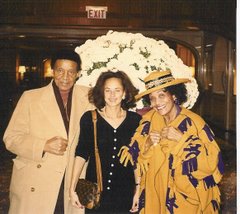
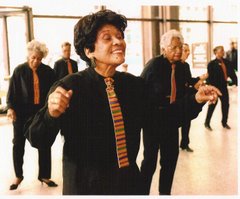
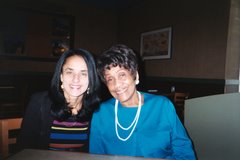

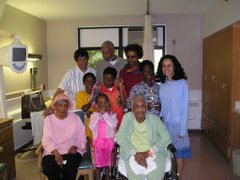

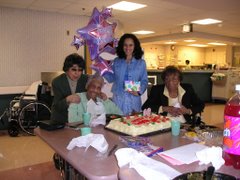
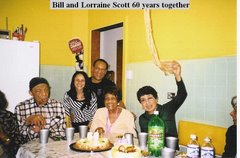
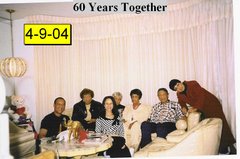
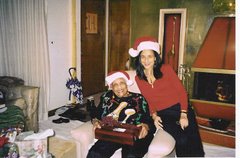
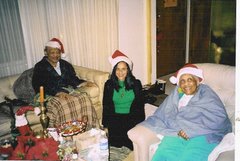
.jpg)